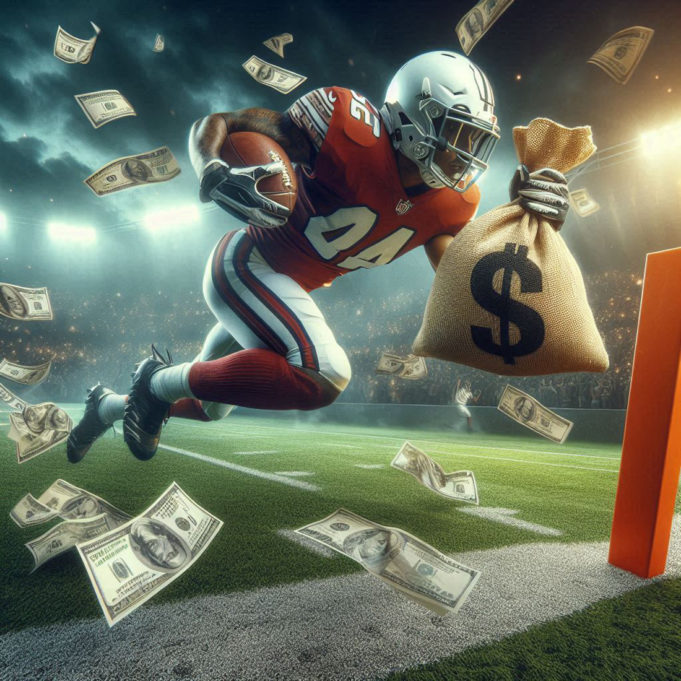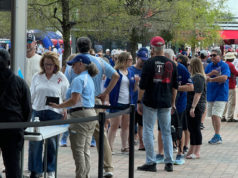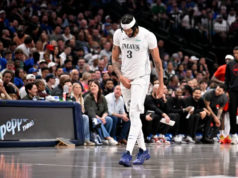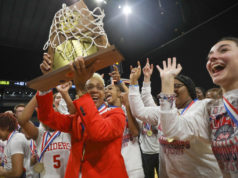I’m the biggest fan of cognitive dissonance. I lie to myself — as many of us do — almost every day. Professional sports entertainment embodies nearly as many lies as professional lawmaking, but college athletes have always twinkled in the liminal space between actual amateurism and generational-wealth contracts. NIL changed almost everything. Athletes, based on a variety of factors, could now receive money in a sort of Swiss-bank workaround of the NCAA’s amateurism clauses. Three years have passed, and the landscape is being slashed and burned again.
Three antitrust lawsuits against the NCAA have seemingly been resolved. The result of the litigation is roughly $2.75 billion in funds being distributed to collegiate athletes who played before NIL policy changes in ’21 — no one knows who or how, mind you — and erects a revenue-sharing agreement among the Power 5 conferences to directly pay players based on a percentage of the revenue collected among the conference schools. The figure looks to start at $22 million per year, with the possibility of increasing over time and with revenue.
It is mused that smaller conferences could opt into the process as well. Does this create a competitive disadvantage for smaller and/or poorer schools? Of course, but being disadvantaged for those reasons is nothing new and about as American as double deep-fried Texas State Fair butter.
Entire doctoral dissertations can — and probably will — be written about the tremendous can of cats and bag of worms that will be unleashed from these successful lawsuits, which are still awaiting the official stamp of approval, but it’s massive. Locally, the implications are particularly interesting for our small, religious institutions: TCU and SMU, or the collective “haves” of Fort Worth and Dallas.
SMU alumni are crowing about their recent affiliation with the ACC and that their alumni “Ponied” up a record-setting fundraising season with the most in the nation at $159 million. That said, this platinum-roots effort is largely necessary for a college that agreed to a nine-year unpaid internship at their new conference, forfeiting media revenue for that time. SMU has basically agreed to pay fraternity dues, fund the annual golf tournament, and let the real members host a kegger in Dallas for nearly a decade while the red, white, and blue horseys pledge for as long as they’re able to before they can remove their silly beanies while trotting around campus.
The cruelest part of Southern Methodist’s affiliation with the Atlantic Coast is the optimistic assumption the conference will even exist — at least as we know it — by the time the Dallasites are able to reap any real financial benefit from membership. The Mustangs also agreed to join the ACC before the class-action lawsuit resolved, so they might need record-setting fundraising every year to operate as well as pay their players since technically the school, thanks to its junior status in the ACC, isn’t entitled to the majority of conference revenue.
TCU will probably not be severely impacted by the shifting pay-your-players arrangement and have already asserted that they will opt into the new system at the highest level possible, but a previous lawsuit against our local university highlights potential issues and considerations for every university moving forward.
One of the landmark cases regarding college amateurism was brought about by a former TCU running back, Kent Waldrep, who was paralyzed during a game against Alabama in 1974. The injury resulted in an endearing subplot in which Hall of Fame Bama coach Paul “Bear” Bryant became a lifelong friend and advocate of Waldrep (Bryant paid for both of Waldrep’s children to attend Alabama), and Waldrep evolved into an instrumental figure in lobbying for disability rights in our country. (The former Frog is even credited with naming the American with Disabilities Act of 1990.) Waldrep eventually brought a lawsuit against TCU for disability coverage and compensation, a ruling that initially went in the former athlete’s favor, but the decision was overturned by a Texas appellate judge, who ruled Waldrep could not be considered an employee of the university at that time.
I don’t possess a JD, and have no confidence the results of these antitrust suits change that singular ruling, but it seems the professionalization through direct payments could potentially change the status of college athletes as employees of their institutions from now on, which may mean that things like medical coverage, disability, life, retirement, and other expected benefits of gainful employment would be on the table, especially for those receiving them and potentially even those who aren’t.
Another consequence of the change to amateurism status is a further chasm between players who are paid and those who aren’t. Separation within teams has always existed between scholarship players and walk-ons, who pay tuition completely out of their own pockets but put in the same absurdly large quantity of effort and hours into the athletic programs as those receiving a free education for sacrificing their time and bodies. It can be assumed that paid players will be treated as many Americans in the workforce are now and considered contract or at-will labor with none of the protections of salaried and benefited employees, though these players would be in an exceptionally powerful position compared to many contractors in that a formed union or strike could swiftly shut down a season. No school would be able to hire or promote a group of scabs to show up in a matter of days and notch a victory against another major university.
As is common with landmark court cases the past few years — hell, even the last few months — questions regarding the future dwarf answers, but you can be assured the tacit tongue-in-cheek amateur status of collegiate athletes, especially in the money sports, has been banished forever. At this point, it does no one any good to sit on our lawns in folding chairs groaning about the good ol’ days and how much better they were. As with most fantasies of the past, they are just that. We just know more now. Fans, coaches, university officials, and even the athletes themselves have, will be, and are in an all-out scramble to figure out who will be paid and how, and the glorious chaos of college sports continues as it always has, albeit in a different and perhaps even more convoluted evolution.












